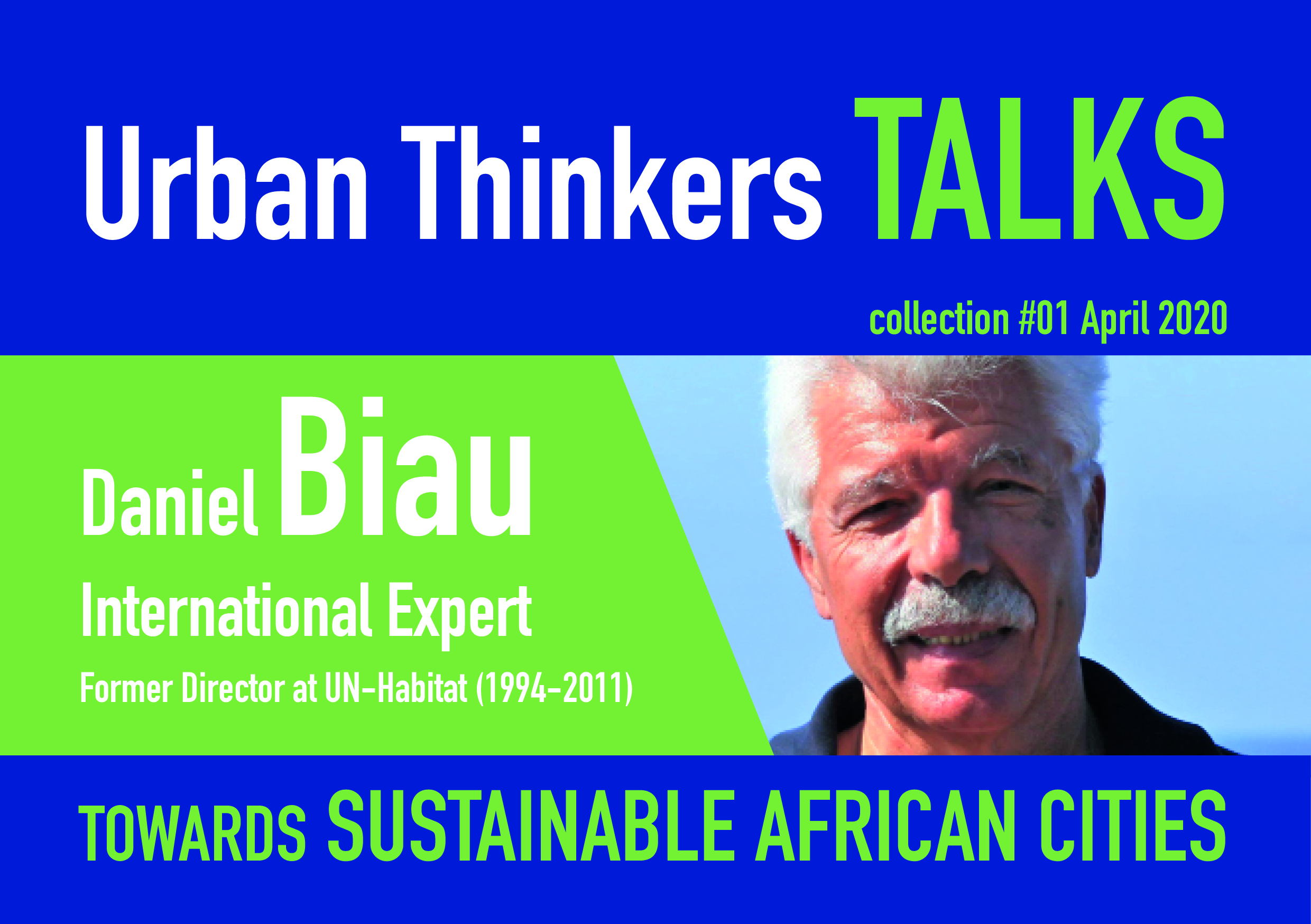Interview of Daniel Biau by Maggie Cazal for Global Urban Think Tank
This interview is the n°1 of the Collection “Urban Thinkers TALKS” created by Maggie Cazal, PhD in urban and regional planning. International speaker. Founder of Global Urban Think Tank. This edition is supported by the NGO Urbanistes Sans Frontières (USF) and the International Multidisciplinary Sustainable Development Organization (ODDIM)
This interview is downloadable in PDF Daniel Biau INTERVIEW EN
You are one of the pillars and the institutional memory of UN-Habitat. You designed and founded the World Urban Forum (WUF) in 2001-2002. You have just participated in the tenth edition of this forum (WUF10) which took place in Abu Dhabi. What is your impression on the choice of themes and their links with the New Urban Agenda, adopted at the Habitat III Summit in Quito in 2016? What evolution did you notice in the discourses of the participants?
Organized by UN-Habitat, WUF10 brought together more than 13,000 participants who held more than a hundred round-tables and workshops on all subjects related to the urbanization of our planet. The main theme of the WUF sessions is always chosen according to two factors: the universal importance of the subject in the current period and the experiences, challenges and interests of the host country. In Abu Dhabi the unifying theme of WUF10 was: “Cities of Opportunities, Connecting Culture and Innovation”.
This theme actually combined two aspects often perceived as contradictory. Culture is a collection of knowledge, myths, beliefs, traditions, artistic and literary trends, behaviors and values shared by a society and which contribute to its cohesion and its continuity. Innovation, for its part, refers to ideas that give birth to an economically viable product or service that meets a specific need. Technical innovations that have had a big impact on urbanization range from the elevator to the GPS, via the automobile and the computer. In short, culture refers to the long term, while innovation is characterized by a rapid and profitable leap forward.
Cultural development is a priority for Abu Dhabi. The Emirate of course highlights the Islamic architectural heritage of the Gulf countries and of great historic cities such as Istanbul, Samarkand or Isfahan. It built the Sheikh Zayed Grand Mosque which reflects and modernizes this heritage. But it also insists on cultural diversity, for example through the comparative approach of the Louvre Abu Dhabi.
Placing culture at the heart of development policies represents a crucial investment in moving towards a peaceful future for the world.
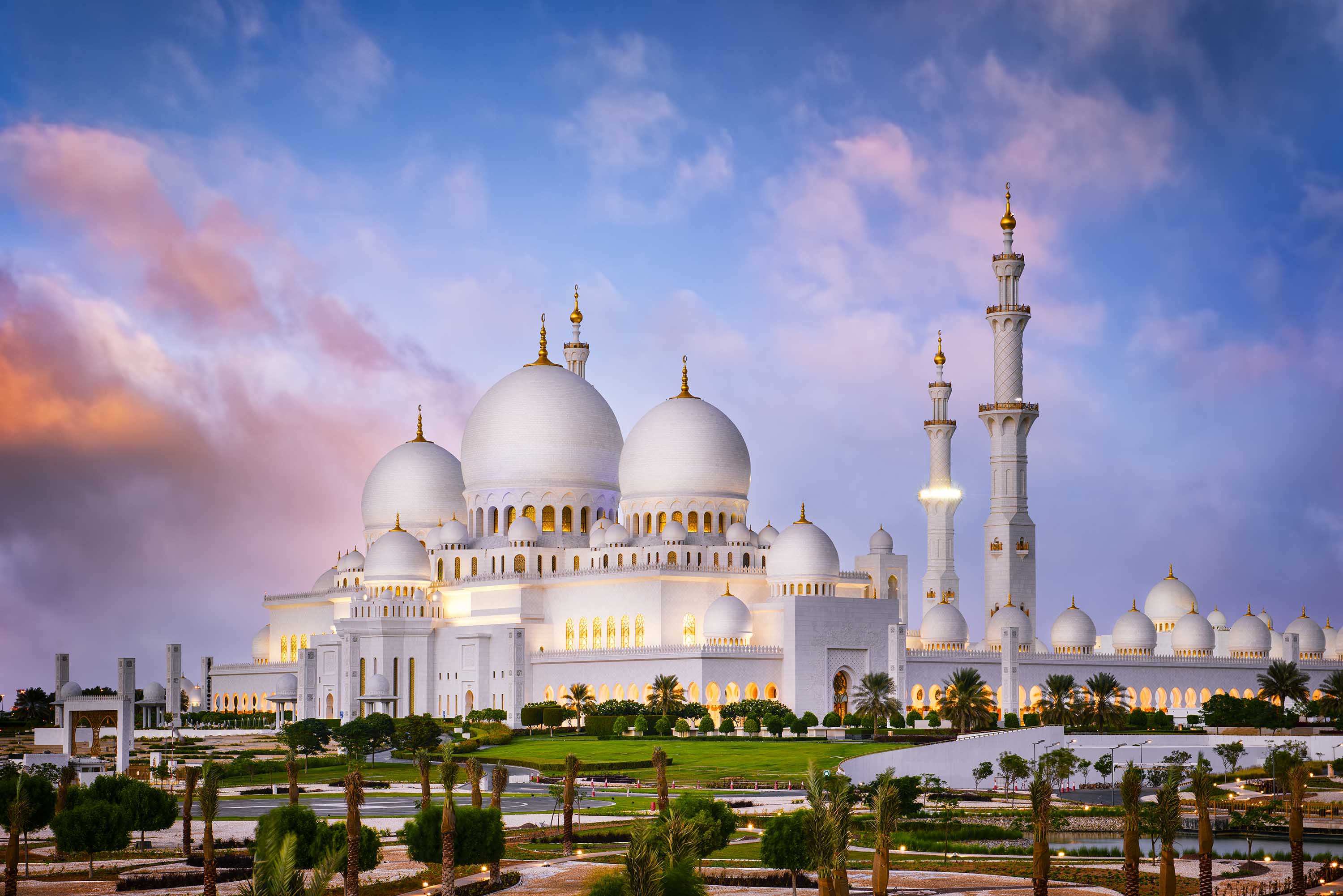
With UNESCO, I think that the cultural dimension should constitute a pillar of sustainable development (in addition to the economic, social and environmental pillars).
Technical innovation is now globalized, but it must take into account cultural differences. The digital revolution that we have known for three decades affects all continents. It is marked by numerous innovations with urban implications which range from the Internet to instant communications by smartphones, from drones to geospatial applications and video surveillance, from Uber to driverless cars, from car sharing to Airbnb , from home automation to traffic management systems, from social networks to teleworking, virtual publications to streaming, deliveries by Amazon or Ali Baba to e-finance like M-Pesa and cryptocurrencies, from robots to artificial intelligence, distance education to telemedicine, from decentralized cooperation to anti-system mobilizations, etc. Urban policies must exploit the benefits of this revolution while minimizing its negative impacts.
Let me add that there are not only technical innovations but also intangible ones such as the creation of institutions (the UN and the EU!), the signing of agreements (and their implementation), or the adoption of new strategic laws. And these innovations cannot ignore the variety of cultural contexts.
The New Urban Agenda highlights the role of cultural diversity in enriching urban development. It also emphasizes the influence of innovations on urban productivity and competitiveness. WUF10 developed and illustrated these themes.
Historically, cities have always been centres of creativity and cultural renewal. Today I believe that innovations which proliferate and modify certain parameters of urbanization should be systematically identified and evaluated. In my opinion, such a global assessment programme would be very useful for all urban planners and urban decision-makers and would prevent them from falling into the fetishism of innovation at all cost.
A large number of subjects were discussed in Abu Dhabi. For example, several multilateral agencies have proposed to review the definition of cities, which would have a fairly interesting statistical and media impact. In fact, the WUF has always been characterized by its thematic diversity and openness because, despite all innovations, urban problems present a strong continuity. All WUF sessions have addressed the two major challenges of urban sustainability and equity. That of Abu Dhabi focused on opportunities, on a positive vision of urbanization which is the trademark of the Emirates and other Gulf nations. One of the tasks of urban planners is to turn challenges into opportunities; WUF gives them the opportunity to compare their experiences and learn from each other.
Is the urbanization of territories a condition for the economic and social emergence of developing countries? What is your definition of sustainable development for cities and territories? How to implement the Sustainable Development Goal dedicated to sustainable cities and communities (SDG11)? In your opinion, are there different methods depending on territories and countries?
UN-Habitat has shown through numerous studies that the level of socio-economic development of countries is directly correlated to their rate of urbanization. In general, cities are the engine of economic growth. They are centres of education and culture, of trade, of social contacts. But they are also places of inequality, poverty, tension, violence. As already mentioned, urbanization always has a double character, it offers economic opportunities but requires meeting major challenges. The role of any urban policy is therefore to optimize the chances, the opportunities, and to reduce the risks and dangers.
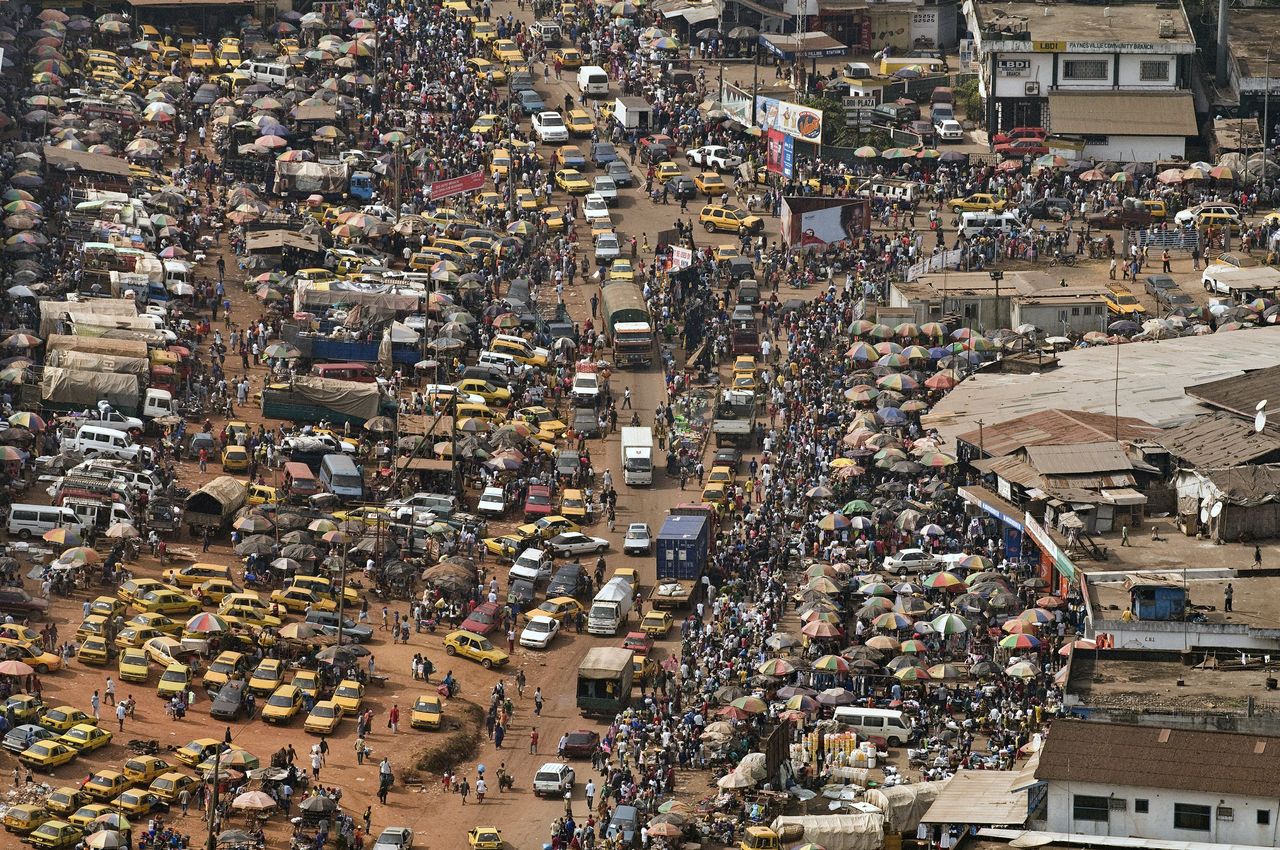
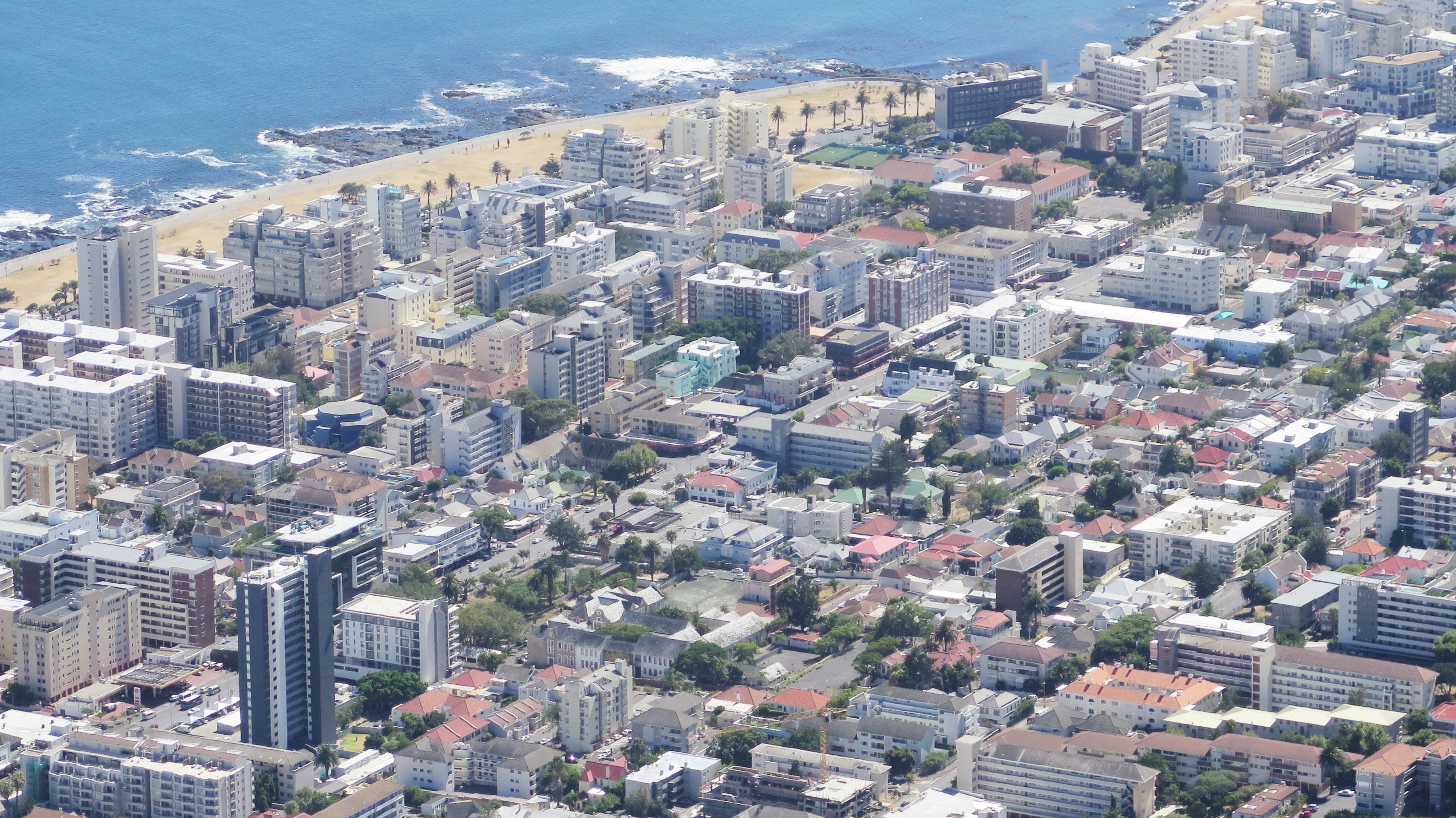 Sustainable Cities? Contrasting views of Monrovia (source EAMAU) and Cape Town (photo DB)
Sustainable Cities? Contrasting views of Monrovia (source EAMAU) and Cape Town (photo DB)
The concept of sustainable development, prepared by the Brundtland Commission in the 1980s, was formalized in 1992 at the Earth Summit in Rio de Janeiro. This Summit created the United Nations Commission on Sustainable Development and defined sustainable development as having three objectives corresponding to three “pillars”: economic development, social equity and environmental protection. This general definition remains a starting point, but it is a bit narrow when applied to urban development.
In my opinion, the complexity of cities implies that sustainable urban development rests on at least seven closely interconnected “pillars”. I therefore propose a multidimensional definition of urban and territorial sustainability, valid for all countries. Very succinctly, it would combine the following elements:
1. Institutional sustainability that requires a clear and solid institutional framework as well as enabling laws and regulations;
2. Economic sustainability that requires adequate infrastructure, including for transport and climate change adaptation;
3. Financial sustainability that requires that local and regional authorities have sufficient and predictable resources, managed locally;
4. Spatial sustainability that requires curbing urban sprawl, reducing inequalities within territories and favouring public transport;
5. Social sustainability that requires a policy of housing and basic services for all, including by improving informal neighborhoods and helping the urban poor;
6. Environmental sustainability that requires reducing energy consumption and air and water pollution and encouraging recycling;
7. Finally, cultural sustainability to be ensured by promoting diversity, tolerance and living together.
Sustainable Development Goal 11, “Sustainable Cities and Communities”, is rather poorly formulated (almost inevitable result of collective drafting by hundreds of negotiators!) But it more or less takes up these seven characteristics of the sustainable city which constitute universal goals. To reach these objectives by 2030, methods will have to vary according to the level of development of countries and the situation of their cities. Most important challenges would be, on the one hand, that governments develop national policies aimed at contextualizing and achieving these objectives and, on the other hand, that monitoring indicators are put in place allowing each country, each region, to assess their own progress in relation to the objectives thus specified.
It is regrettable that so far, despite the commitments contained in the New Urban Agenda, few countries have embarked on this path.
The challenge of adapting to climate change in cities is a global issue, however certain areas are in urgent need of more action and shared governance. In your views what are these territories and countries and what are the expected objectives?
Climate change has become a major international issue and it is clear that this is not just an environmental problem. Its causes are indeed at the same time institutional, economic, financial and spatial while its consequences are both social and environmental.
Its causes are institutional because the lack of political will explains the absence of firm regulations and control of greenhouse gas emissions. They are economical because the efficiency of many companies has long been associated with uncontrolled CO2 emissions. They are financial because insufficient funding does not allow adaptation measures to be implemented on the necessary scale. And of course they are spatial because the design of our cities and buildings has a direct influence on energy consumption and vulnerability to disasters.
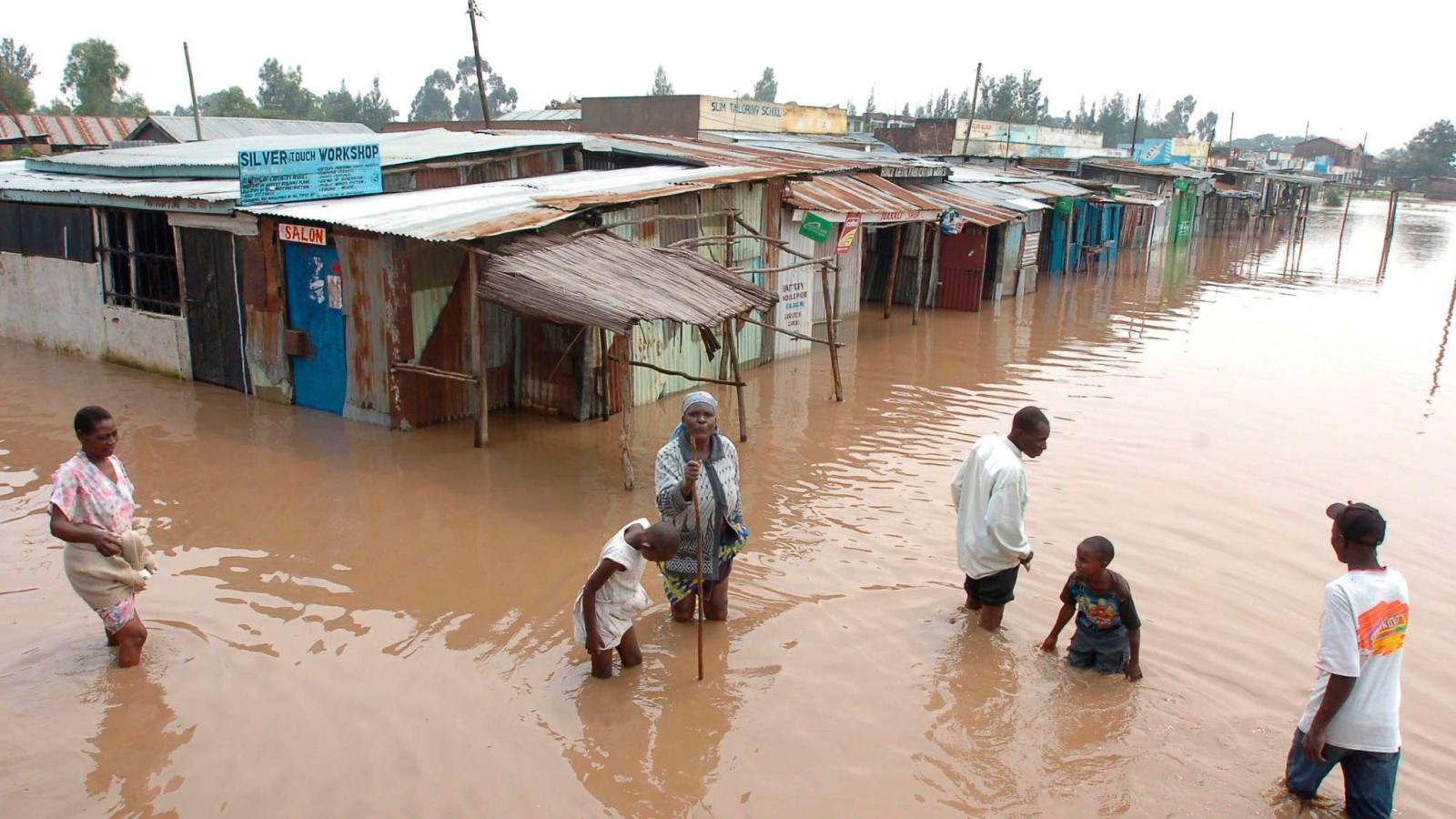
The consequences of climate change are social since the poorest communities are the first victims of this change and they are also environmental since all natural cycles are affected by droughts, heat peaks, floods, etc. This latter aspect is essential on the African continent where many countries are affected by recurrent droughts and floods. Adaptation to climate change requires major programmes in these two areas in a majority of countries. In urban areas flood protection has become a key concern, in coastal cities as well as inland. This adaptation may involve population displacements, the construction of dikes or reservoirs, the modification of certain networks, all measures that require substantial funding.
In 2015 the Paris Agreement set “a new collective quantified goal from a floor of $ 100 billion per year” to help developing countries adapt to climate change. We are far from that figure and the UN “Green Fund” remains underfunded. Least Developed Countries remain in dire need of increased aid from developed and emerging countries which are the main contributors to climate change.
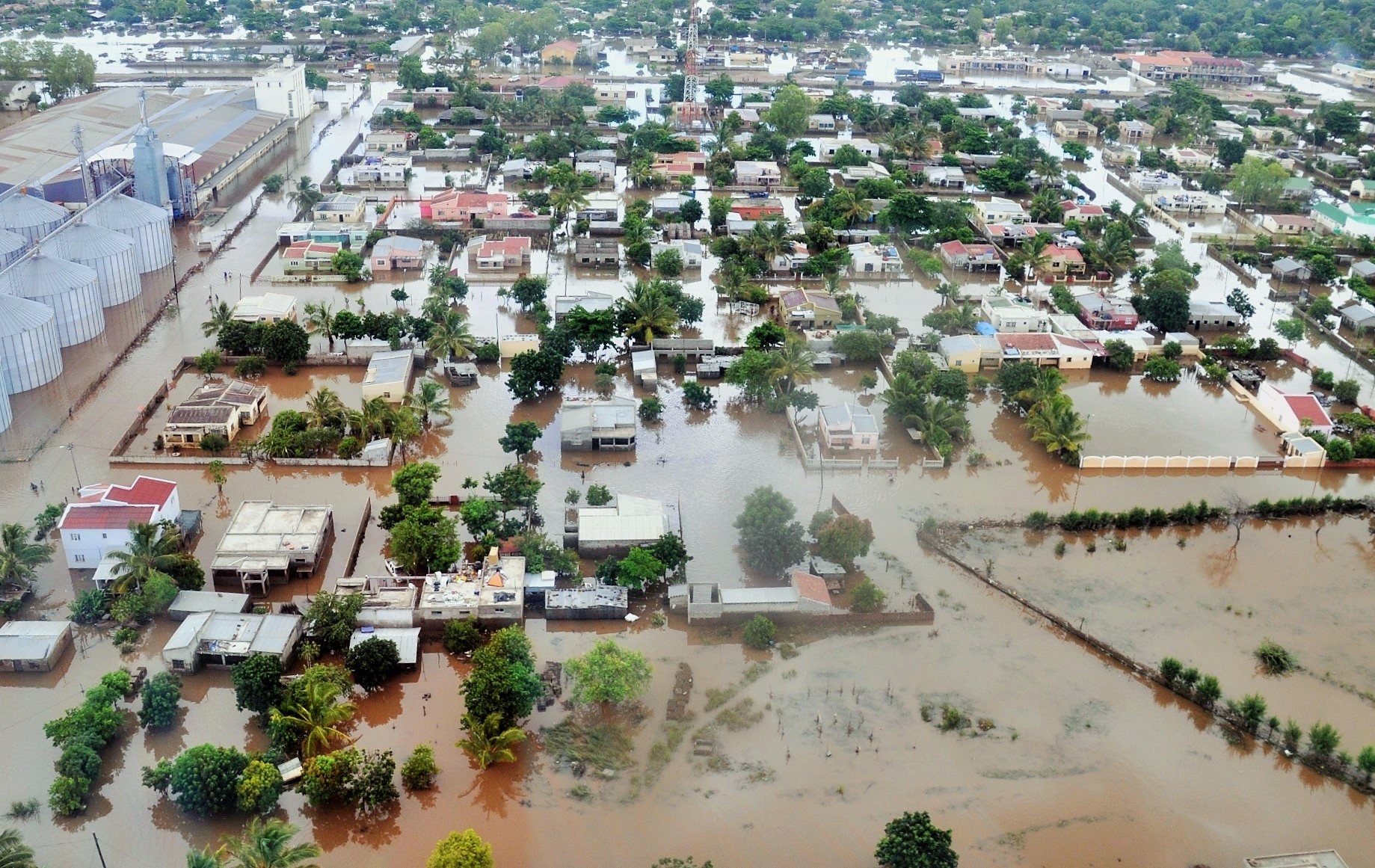
You have lived in Africa for more than thirty years and in particular in a city which has some of the largest slums in the world. In your views what are the causes of the development of the informal city, especially in Africa? What would be effective and sustainable solutions to regularize land tenure and restructure precarious neighbourhoods?
Africa today counts 1.35 billion people, of whom only 590 million live in urban agglomerations (43%). According to UN projections the continent urban population is expected to reach 1 billion by 2036. At the moment about half of urban dwellers (300 million) live in slums characterized by high densities, lack of basic services, precarious housing, and which are often located in inappropriate, dangerous, flood-prone areas.
Slums are primarily a response to the housing needs of people with low or very low incomes. Indeed, the prices and rents of decent housing are not affordable for these populations. These prices result firstly from the cost of land, especially serviced land which is totally inaccessible for the poor. And these costs are the consequence of a systematic absence of land policy. African land markets, even more than those of Europe, are governed by the law of the jungle, i.e. by that of supply and demand combined with frantic speculation!
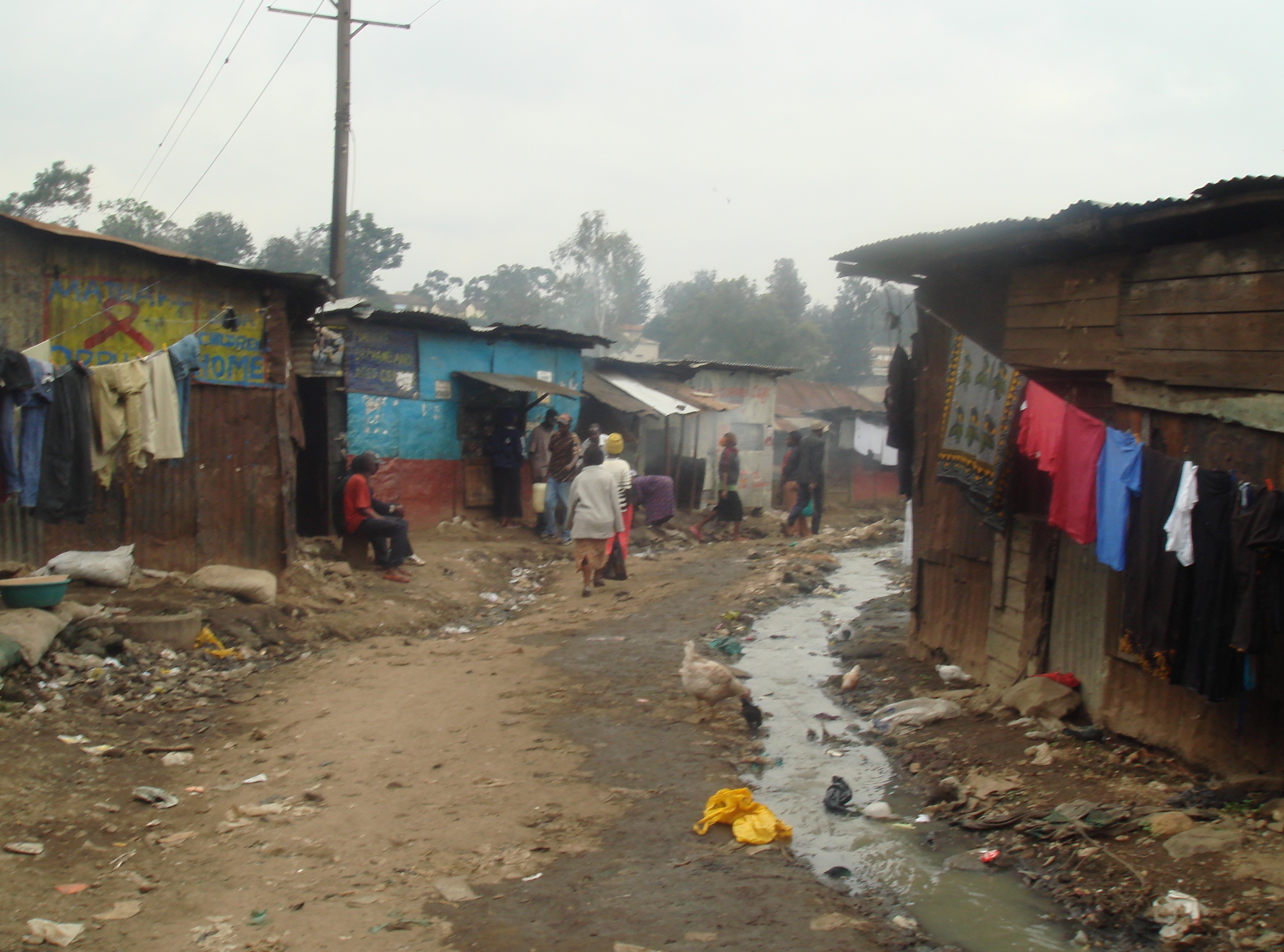
The solutions most often recommended consist in restructuring informal areas, regularizing their status and providing them with basic services (roads, water, sanitation, electricity). This works under two conditions: availability of substantial public funding and focus on the districts of “owners”, recent squatters as well as long-term occupants. However, this does not work for tenant-dominated slums, as is the case in Nairobi, because any improvement of these areas results in almost automatic rent increases and therefore the departure of the poorest tenants. This is in fact what happened in the 1970s in France when the government undertook to renovate (and therefore gentrify) the old city centres.
China has eradicated its slums and sharply reduced urban poverty by razing deteriorated neighborhoods and relocating their inhabitants in peripheral buildings. This rehousing was financed by the resale of vacated land to public or private developers, a practice that Baron Haussmann would not have denied, but that the inhabitants of the great slum of Dharavi, in the heart of Mumbai, rejected because their neighbourhood was also their place of work.
The alternative approach is for municipalities to work with the communities concerned, owners, tenants, civil society organizations, and define consensual schemes for regularization and restructuring of informal settlements, which involves resettling part of the population in other areas. It takes a lot of time and money, both from the authorities and from the people. The homogeneity and solidarity of the communities are therefore essential to avoid getting bogged down and possible conflicts. This approach is rarely applied in Africa due to insufficient financial and human resources of municipalities.
Of course, the improvement of informal neighbourhoods must go hand in hand with the production of new areas of low-cost housing that can accommodate urban growth. This must begin with the creation of large land developments, with basic infrastructure, followed by the sale of plots, either directly to households or to intermediate developers. Many projects have demonstrated the feasibility of this approach when it is possible to find affordable and relatively well located land.
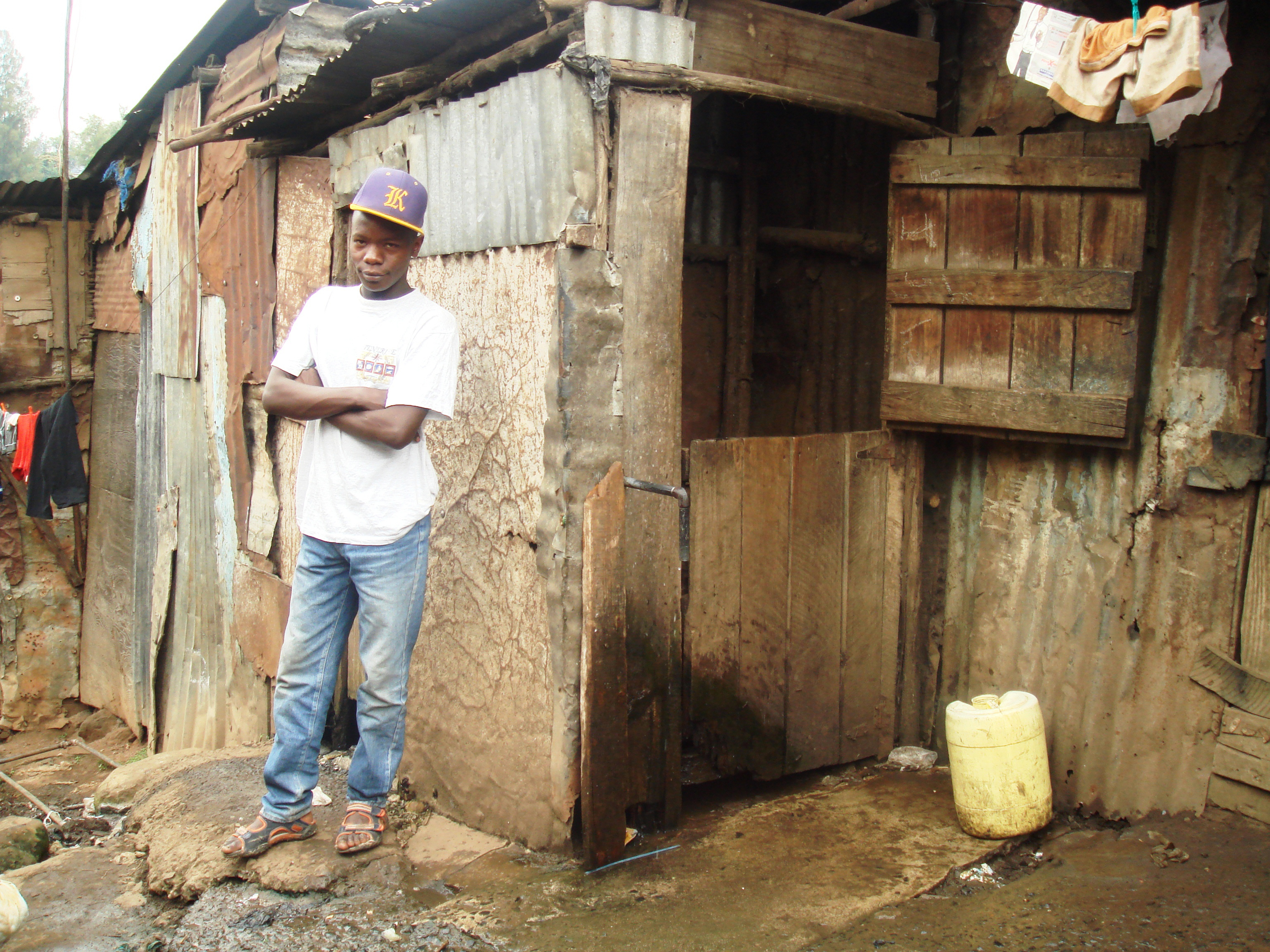
It seems that in Africa, it is easier to create new towns than to restructure existing and disadvantaged neighbourhoods. What is your assessment of new town policies in Africa? Are they designed on the criteria of sustainable cities and territories? Can they be an effective remedy against slums?
New cities are becoming fashionable again in Africa under the influence of American design companies and Chinese funding. So far their impact on urban growth has been marginal, especially in quantitative terms. For a successful Abuja how many Dodoma or Yamoussoukro ghost towns?
If new cities appeared as early as the 18th century – think of St Petersburg and Washington, two prestigious capitals – the modern concept of New Cities was born in Great Britain after the Second World War. A total of 32 new cities were built by New Town Development Corporations, which now house 2.5 million residents. The key to their success was their ability to acquire land at agricultural price, to equip and resell it at the price of urban land, thus capturing significant added value and balancing their budgets. Excellent strategy. France followed this movement at the end of the 1960s by deciding to build 9 new towns, including 5 around Paris. The latter now house nearly one million inhabitants. The most populous, Marne la Vallée, counts 300,000 inhabitants. The new French towns, quite successful in terms of job creation, embody the power of public planning, a bygone era.
Following the example of Brasilia, the capital founded in 1960 far from the Atlantic coast with the intention of rebalancing inward the development of Brazil, several African countries whose main cities, colonial heritage, were on the coasts tried to create new, more central capitals. The main one was Abuja, the federal capital of Nigeria, which has grown from 330,000 inhabitants in 1990 to 3.3 million today. Although Lagos (14.4 million, source: UN «World Urbanization Prospects 2018») remains the economic capital of the country, Abuja has flourished and can be considered a success. In southern Africa, Lilongwe and Gaborone, recent agglomerations, also play quite well their role as national capitals.
Other new cities have been built with the official aim of relieving congestion in large cities. These are essentially satellite cities, the best known of which are located around Cairo (Morocco has adopted the same approach). Most of these cities in the desert, intended for the middle or upper classes, have not yet reached their demographic objectives for two main reasons: lack of local jobs and insufficient connections with the metropolis. While the Cairo metropolitan area (the most populous on the continent) has reached 21 million inhabitants, its 8 satellite cities (out of a total of 22 in Egypt) are hosting about 3 to 4 million inhabitants.
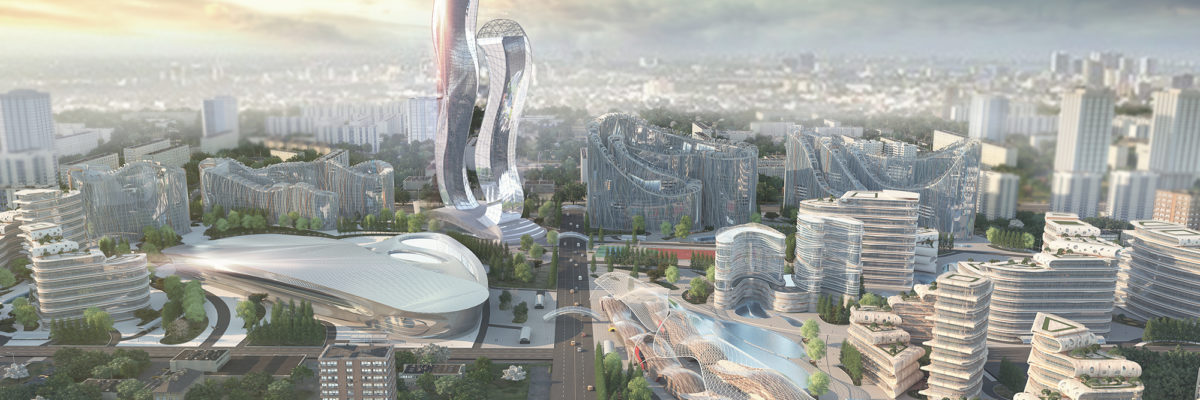
Since 2015, Cairo’s new expansion strategy has consisted of building a new administrative and financial capital to the east of the city, where ministries and embassies will have to move. The new town of Diamniadio, 30 km from Dakar, and that of Kilamba, south of Luanda, seem to be inspired by the same philosophy. In any case, this new generation of satellite cities essentially aims at improving the economic performance and administrative functioning of large metropolises. These cities, intended for the middle and upper classes, are not intended to resolve the issue of housing for the disadvantaged. They are easy to design but costly to finance and require significant public investment as demonstrated by the history of Dubai, Abu Dhabi or Astana (now Nur-Sultan, capital of Kazakhstan since 1998). Properly planned, new cities could be sustainable but risk appearing as privileged islands in the middle of neglected territories. As we know, modern Brasilia (4.6 million inhabitants today) is surrounded by favelas.
New cities have played a large role since the 1990s in China’s policy of accelerated urbanization, thanks to a proactive land strategy which has enabled huge public investments. I had crossed Shenzhen (without knowing it) in 1975, the town then had 36,000 inhabitants. Today the ultra-modern Shenzhen reaches 12.4 million city dwellers. And many other cities have followed its example. But this type of development does not seem to be reproducible outside of China.
In summary, satellite cities can be sustainable and economically prosperous, but they are not part of the solutions to the urban crisis facing Africa. It should also be noted that neither the Sustainable Development Goals nor the New Urban Agenda mention new towns among the options recommended by the member states of the United Nations.
Technical and technological innovations are positioning themselves as solutions of the future to regulate the integrated systems of the so-called “smart city”. What is your opinion on these digital revolutions? Are they suitable for Africa?
Like new cities and skyscrapers, smart cities are also very trendy, especially in East Asia and the Gulf countries. They must be ecological and highly technological. At the moment they are scientifically interesting prototypes (e.g. Songdo in Korea) but reserved to the upper classes. However, I think that introducing more intelligence into the management of existing cities, in Africa as elsewhere, should be a more relevant priority.
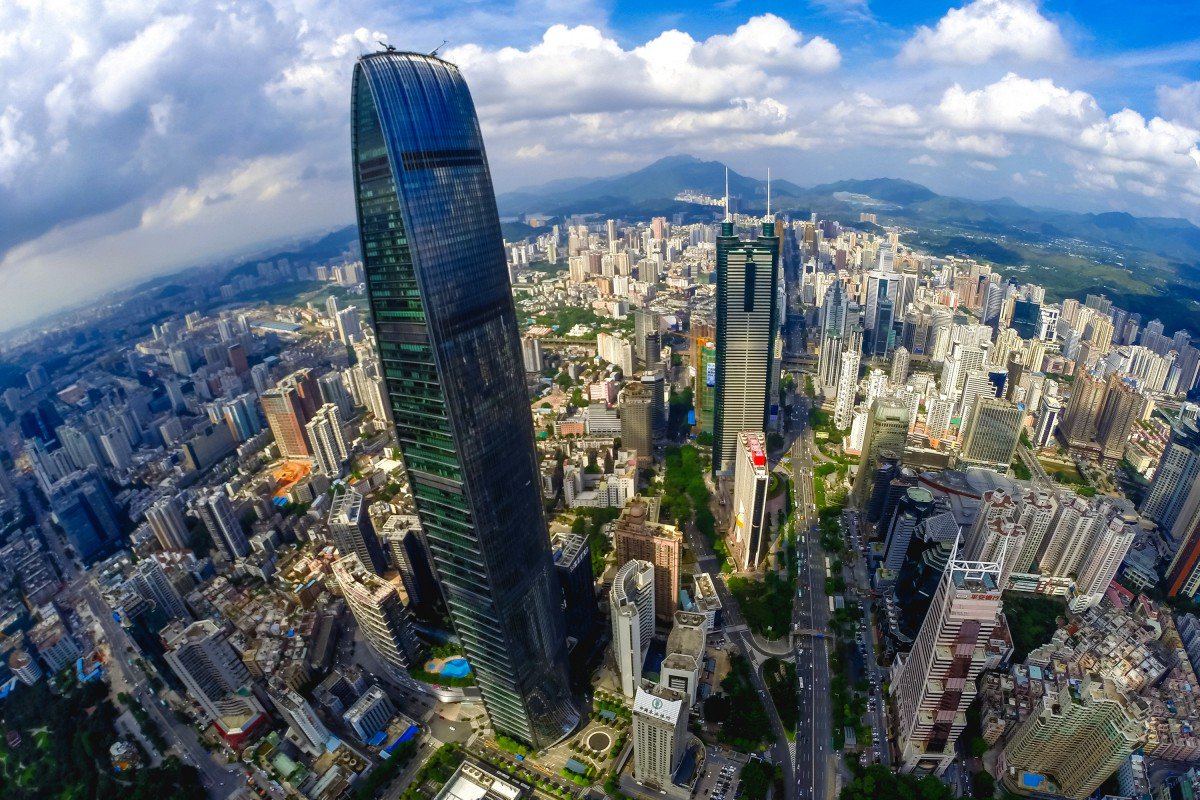
Intelligence in land matters would mean setting up continuously updated computerized land registers allowing for detailed knowledge of the land and property markets and progressive taxation of land and urban properties. It would also imply effective inter-institutional planning for urban restructuring and expansion.
Intelligence in infrastructure matters would mean making the most of information and geospatial technologies to optimize the programming, management and maintenance of transport and communication systems, water and electricity distribution, waste collection and recycling. It should also involve setting up monitoring mechanisms and observatories on pollution, greenhouse gas emissions, energy consumption, natural and technological risks.
Intelligence should also be political, i.e. encourage decentralization, good coordination between the various spheres of government, promotion of effective partnerships with service providers, investors, promoters, citizen involvement in urban policy and management. To be really smart, cities should be democratic and participatory.
Without denying the interest of prototype cities to test the innovations made possible by the current digital revolution, it seems to me that making existing cities smarter, more intelligent, constitutes an otherwise strategic challenge insofar as any progress in these cities could benefit dozens of millions of people.
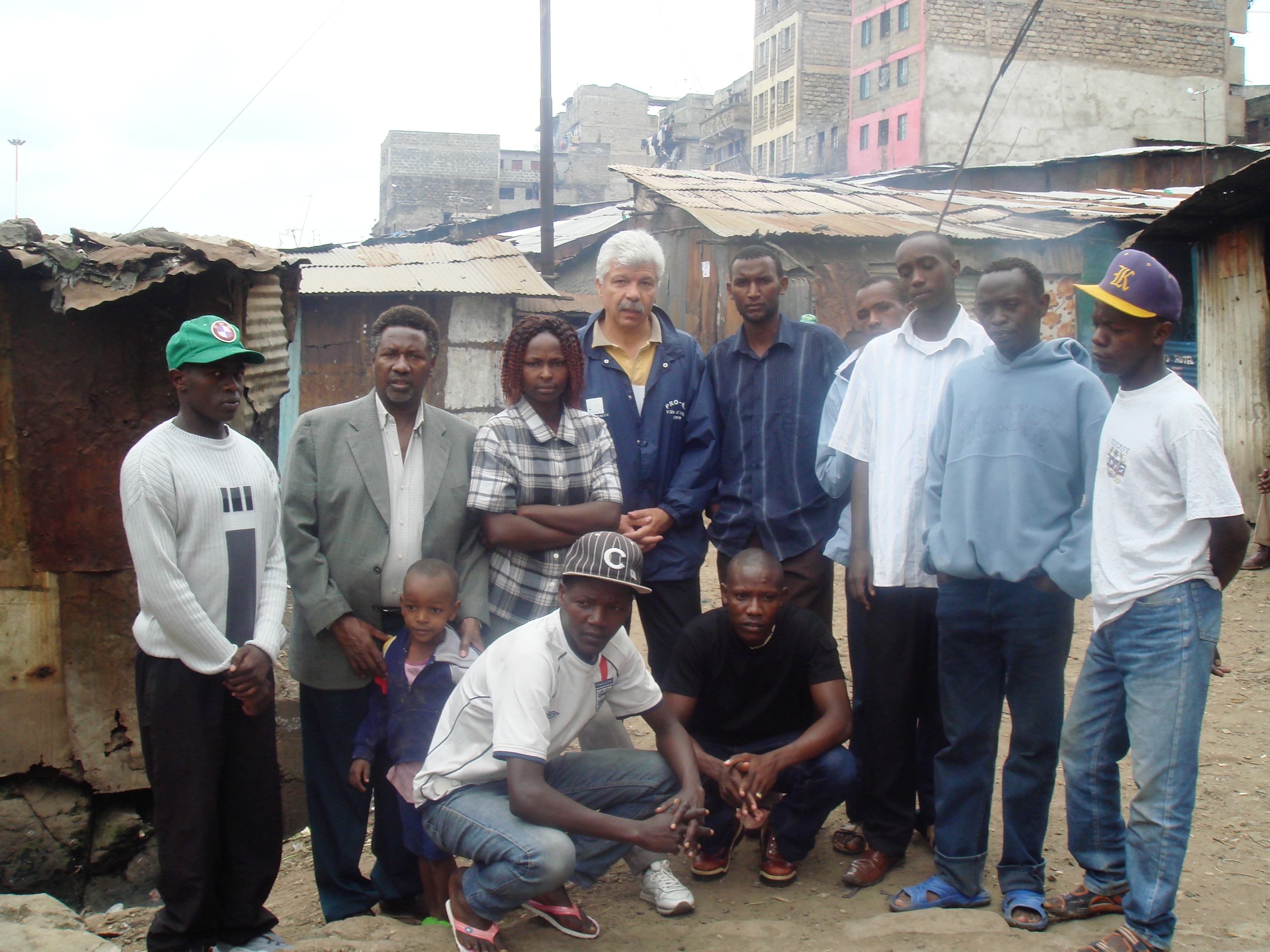
One of the major problems in Africa seems to be the lack of funding for the sustainable city. What is in your opinion the economic model to be implemented which would be best suited to African realities?
Fiscal efficiency is the nerve of urban management. But in Africa it is largely deficient and inequitable.
Local authorities require sustainable and predictable financial resources in order to develop and maintain infrastructure and services needed to cope with rapid urban growth. Without adequate resources, municipalities lose their raison d’être.
Around the world, cities depend on two essential sources of funding: intergovernmental transfers and their own resources. Transfers should be commensurate with the responsibilities assigned to each level of government, they should be fair and transparent. Own resources come mainly from corporate and property taxes. In the latter area, great progress should be possible because on the one hand the price of urban land increases rapidly with urban expansion and densification and on the other hand regulations and land planning constitute a prerogative of public authorities. The miracle of urbanization is that the city can thus produce its own resources as soon as there is political will at both national and local levels.
Significant sources of funding remain under-exploited across Africa. These include insufficient annual taxes on land and property, non-existent taxation of beneficiaries of infrastructure improvements, as well as random taxation of land transactions. The addition of these multiple revenues can represent a few hundred dollars per capita per year and therefore millions of dollars for a well-managed city. In fact, land-based income represents more than 1% of GNP in most OECD countries.
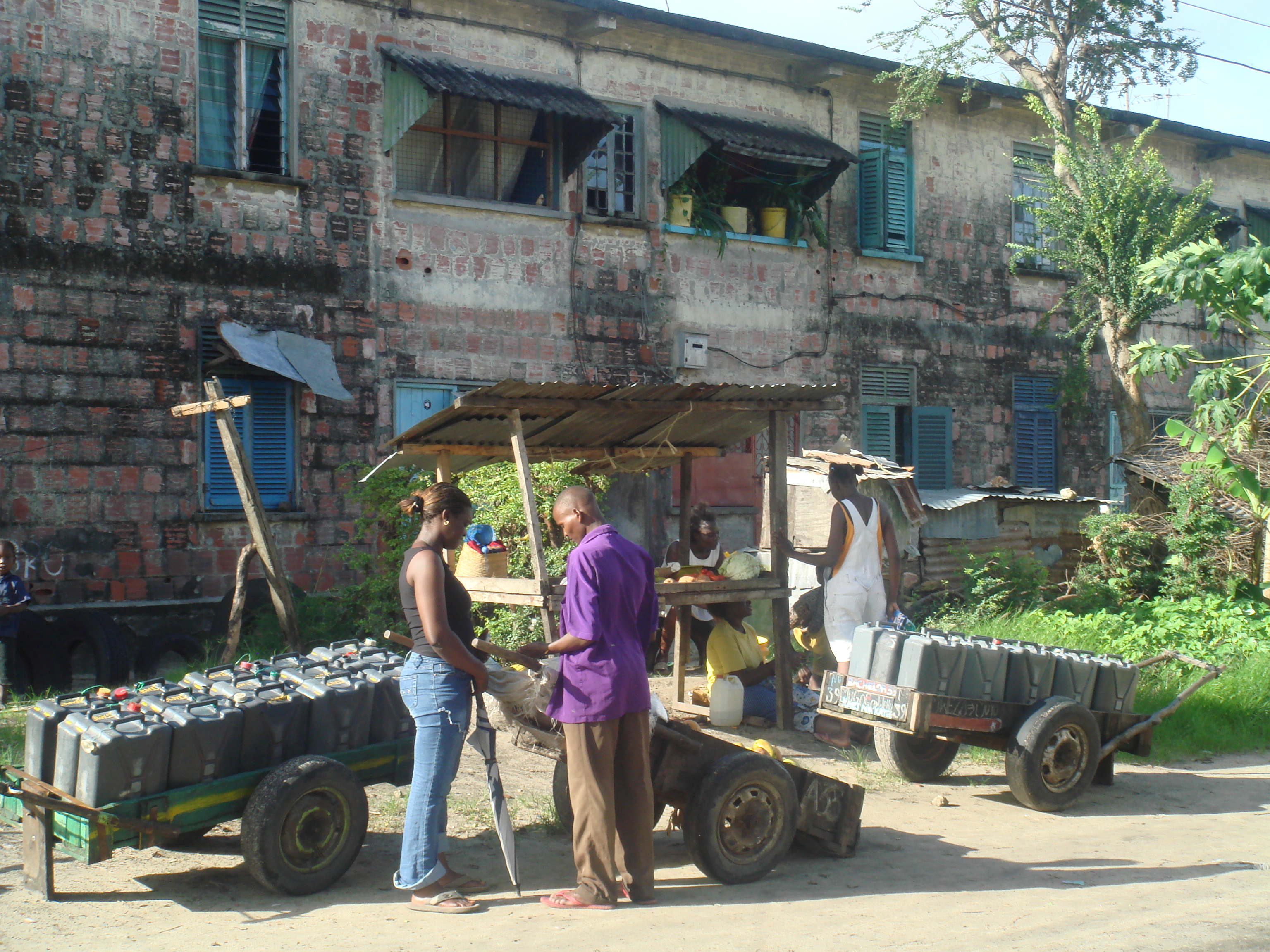
The terms of the equation are clear: urbanization creates and increases land values; public authorities can capture a significant part of this increase; and allocate it to investment and maintenance of essential infrastructure and services.
Regarding marketable services (water, electricity, communication) it is quite possible to balance their funding because users already pay for these services, often at prohibitive prices. Cross-subsidies (large consumers paying more than small consumers, for equal quantity) can make these services accessible to all. The improvement of water distribution in African cities bears witness to this possibility.
You are an international expert of French nationality who studied engineering and urban planning at the prestigious Ecole Nationale des Ponts et Chaussées and obtained a Doctorate in sociology at the School of Hautes Etudes Africaines of Paris V-Sorbonne. The next Africa-France Summit will take place this year in Bordeaux on the theme of sustainable cities and territories. Based on your background and experience, what message do you wish to communicate to this summit?
I strongly believe that, following the example of Asia, Africa must give a much higher priority to urban and interurban infrastructure. This will require, on the one hand, better programming, better planning and, on the other hand, mobilization of funds amounting to billions of dollars. Any speech that overlooks this imperative requirement can only be window dressing.
Better planning means integrating infrastructure projects and spatial planning, coordinating the operation of various infrastructures, setting up metropolitan and regional management bodies, associating infrastructure and services (for example roads and public transport), contextualizing and applying UN-Habitat international guidelines that I had the responsibility of piloting on three fundamental themes: decentralization, basic services and urban and territorial planning.
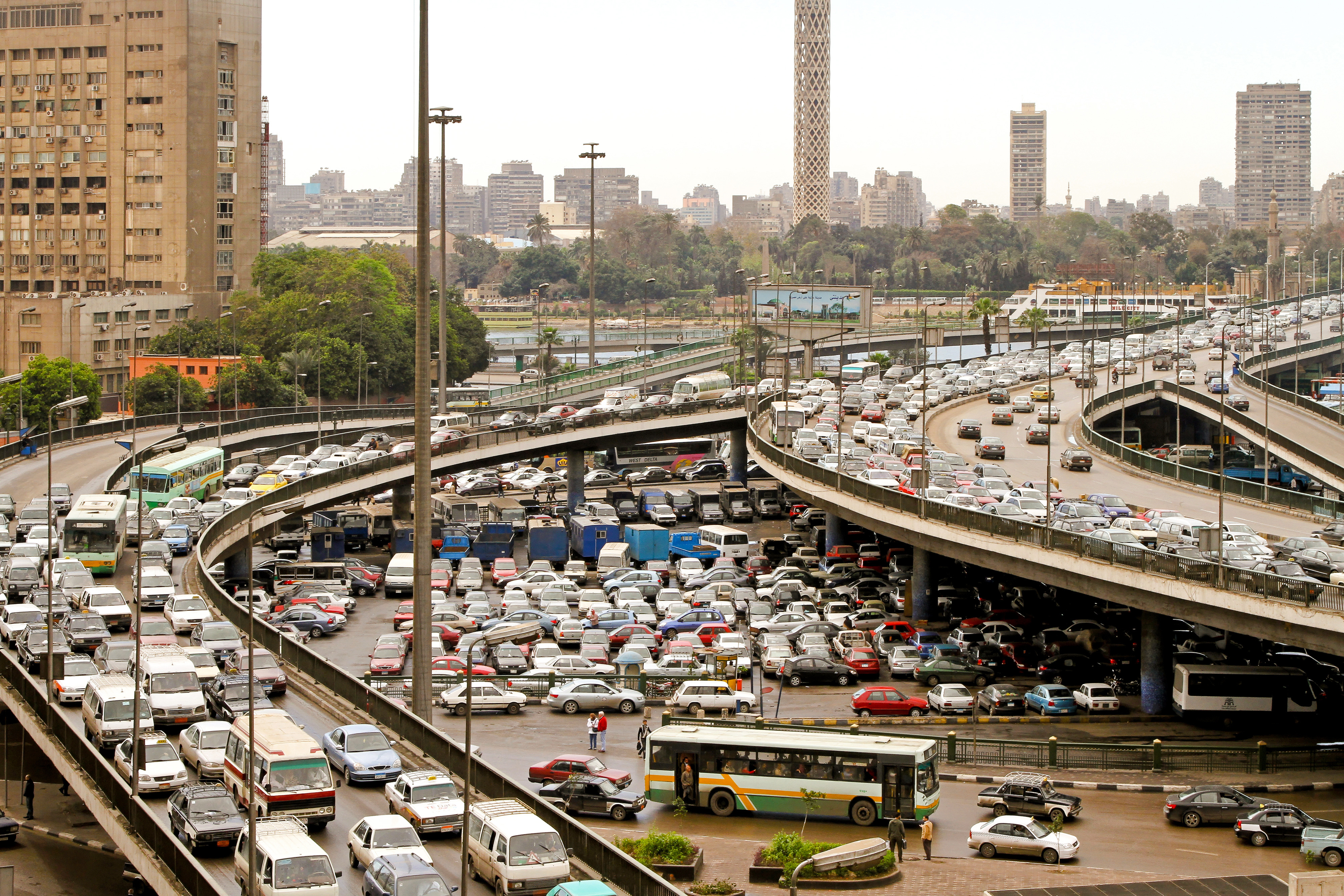
Mobilizing funding means combining domestic (national, provincial, local) and international (multilateral, bilateral) resources, public and private contributions, loans and grants. Putting in place appropriate cost recovery procedures for marketable services and reviewing the base and amount of local taxes to expand non-marketable infrastructure. Avoiding white elephants, including those that seem easy to set up, and not forgetting anti-flooding infrastructure.
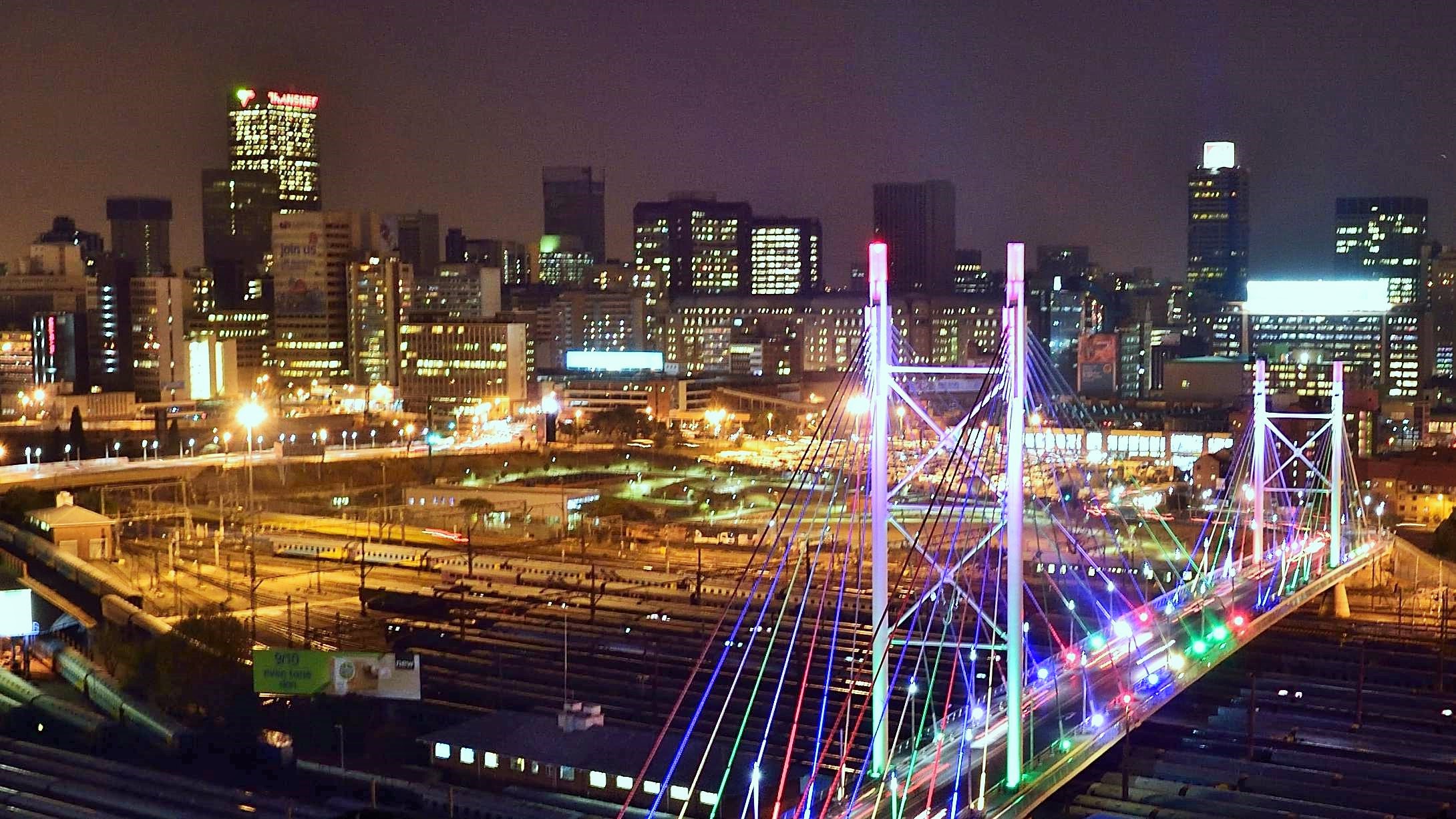
Planning and financing are related to the quality of urban governance, a subject that has been on the agenda for more than two decades. So what means good urban governance? Simply stated, it is a multi-institutional, responsible, transparent and participative mode of organization and management of the city. Good governance often starts with the collective definition of a vision for the future of the city, followed by the development of a strategy for achieving this vision and then the implementation of the necessary reforms and means at different levels, and finally the activation of monitoring and updating mechanisms. This type of governance requires above all political will and human resources. It is still in the making in many African countries, but it conditions the success and impact of infrastructure investments that the continent so badly needs. I hope that in Bordeaux (a city that has efficiently invested in its infrastructure!) the forthcoming Summit will lead to an ambitious action plan in this area.
Interview by Maggie Cazal, March 25, 2020
Find out more about Daniel Biau

Daniel Biau served as Deputy Executive Director of UN-Habitat from 1998 to 2005 and initiated a series of reports on the State of the World Cities. As the head of the technical and regional cooperation division, he contributed to the implementation of the regionalization strategy of UN-Habitat with the creation of regional offices from 1996 onwards. He was manager and co-author of the International Guidelines on Decentralization (1997-2007) and on Basic Urban Services (2003-2009) adopted unanimously by the Governing Council of UN-Habitat. More recently, he was the main author of the International Guidelines on Urban and Territorial Planning, adopted in 2015.
Since 2011, Daniel Biau has been an International Consultant. He is based in Nairobi.
Non-exhaustive list of his recent contributions:
• Evaluation of the National Housing Policy of Jordan, UN-Habitat, Amman, 2011;
• Background report: “Spatial Planning, Basic Services and Impacts of Climate Change in Africa”, AMCHUD, Nairobi, 2012;
• Introductory report: “Urbanization challenges and urban policies in Africa and Madagascar”, Antananarivo, 2013;
• Chief Rapporteur of the Congress of the Global Water Operators Partnerships Alliance, Barcelona, 2013;
• Lead author of the International Guidelines on Urban and Territorial Planning, Nairobi-Paris-Medellin-Fukuoka, 2013-2014. These Guidelines were formally adopted by the Governing Council of UN-Habitat in 2015;
• Evaluation of the New Towns Development Programme of the Islamic Republic of Iran, Tehran, 2015;
• Evaluation of Cooperation between UN-Habitat and Sweden, Nairobi, 2016;
• Background Report: “Reinventing urban planning in Africa”, UNDP, Rabat, 2016;
• Proposal for a new National Housing Policy, UNDP-UN-Habitat, Bahrain, 2018;
• Managerial review of the National Urban Poverty Reduction Programme in Bangladesh, UNDP, 2018;
• Co-editor of the guide “How to formulate a national urban policy?”, UN-Habitat, Melbourne, 2018.
Many articles and interventions on urban development (and on the history of UN-Habitat) available on www.danielbiau.webnode.com
Daniel Biau published in 2015 “The Bridge and the City, a universal love story”, a richly illustrated 400-page book on 24 cities that have marked the world history.

